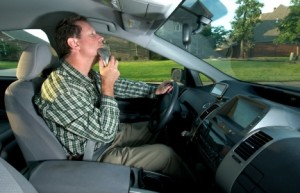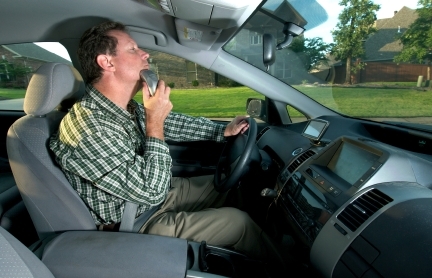
New Jersey recently became the second state after Washington to ban driving while texting-a growing problem on the road. Distractions like cell phones, text messages, the radio or even talkative passengers can prove deadly, according to the Insurance Information Institute (I.I.I.).
A survey by Liberty Mutual Group and Students Against Destructive Decisions (SADD) showed that teens considered sending text messages via cell phones to be their biggest distraction. Of the teens surveyed, 37 percent said that text messaging was extremely or very distracting, while 20 percent said that they were distracted by their emotional states and 19 percent said that having friends in the car was distracting. A January 2007 survey by Nationwide found that 19 percent of motorists say they text message while driving.
The federal government estimates that 30 percent of all crashes in the United States involve driver distraction. Inattentive driving accounted for 6.4 percent of crash fatalities in 2003-the latest data available-according to the U.S. Department of Transportation. While cell phones and text messaging top the list, distractions also include radios, palm pilots, lap tops, navigational aides, eating, drinking, grooming, reading, writing, television watching and attending to children.
“A car is not your living room, office or kitchen. It is a means of getting from one point to another and must be used judiciously,” said Loretta Worters, vice president with the I.I.I. “People can become so absorbed in their conversations or activities that their ability to concentrate on the crucial act of driving is severely impaired, jeopardizing the safety of vehicle occupants and pedestrians.”
Employers are now concerned that they may be held liable for accidents caused by their employees while driving and conducting work-related conversations on cell phones, according to the I.I.I. Under the doctrine of vicarious responsibility, employers may be held legally accountable for the negligent acts of employees committed in the course of employment. Employers may also be found negligent if they fail to put in place a policy for the safe use of cell phones.
“In response, many companies have established cell phone usage policies,” said Ms. Worters. “Some allow employees to conduct business over the phone as long as they pull over to the side of the road or into a parking lot. Others have completely banned the use of all wireless devices in the car.”
The I.I.I. offers the following safety tips while driving:
- Pull Off the Road
Don’t drive while calling or texting; pull off the road to a safe location. - Use Speed Dialing
Program frequently called numbers and your local emergency number into the speed dial feature of your phone for easy, one-touch dialing. When available, use auto answer or voice-activated dialing. - Never Dial While Driving
If you must dial manually, do so only when stopped. Pull off the road, or better yet have a passenger dial for you. - Take a Message
Let your voice mail pick up your calls in tricky driving situations. It’s easy-and safer-to retrieve your messages later on. - Know When to Stop Talking
Keep conversations on the phone and in the car brief so you can concentrate on your driving. If a long discussion is required, if the topic is stressful or emotional, or if driving becomes hazardous, end your conversation and continue it when you are not in traffic. - Keep the Phone in its Holder
Make sure your phone is securely in its holder when you are not using it so it does not pop out and distract you when you are driving. - Don’t Take Notes While Driving
If you need to take something down, use a tape recorder or pull off the road. - Don’t Eat or Drink while Driving
Spills-both hot and cold-can easily cause an accident. If you have to stop short, you could also be severely burned. - Groom Yourself at Home
Shaving, putting on makeup, combing your hair or other forms of preening are distractions and should be done at home, not while driving.
While everyone should follow these safety rules, it is also important to review them carefully with teens when they are first learning to drive.
For more information on this topic, see the I.I.I.’s Issues Update paper on Cell Phones and Driving.












